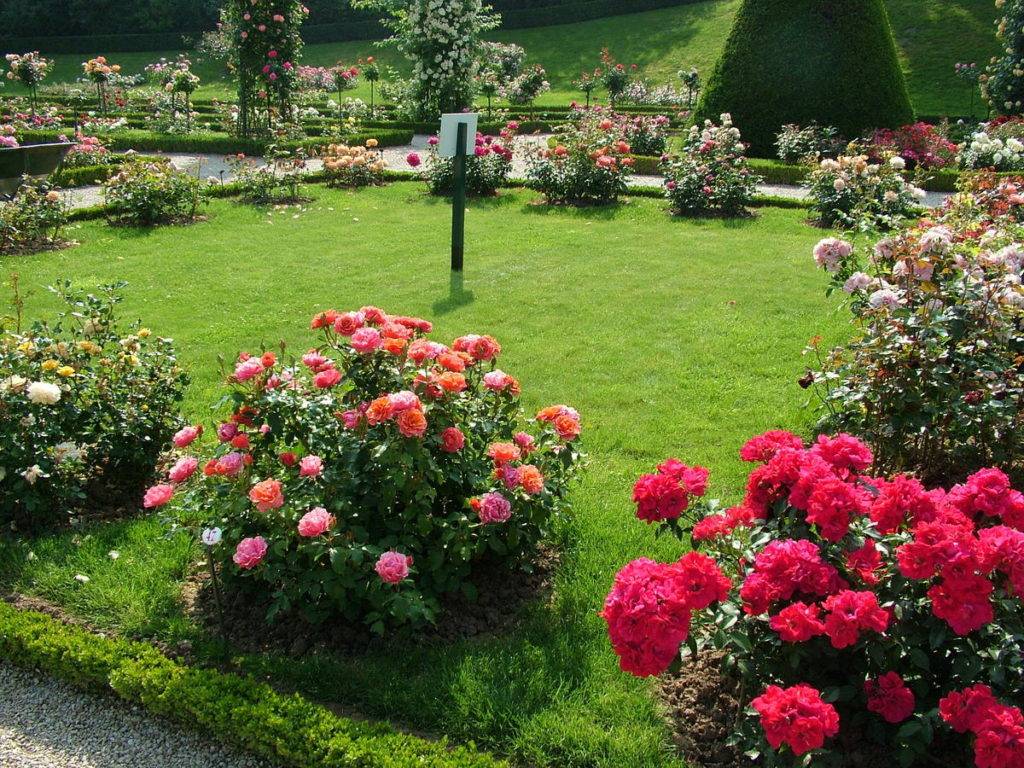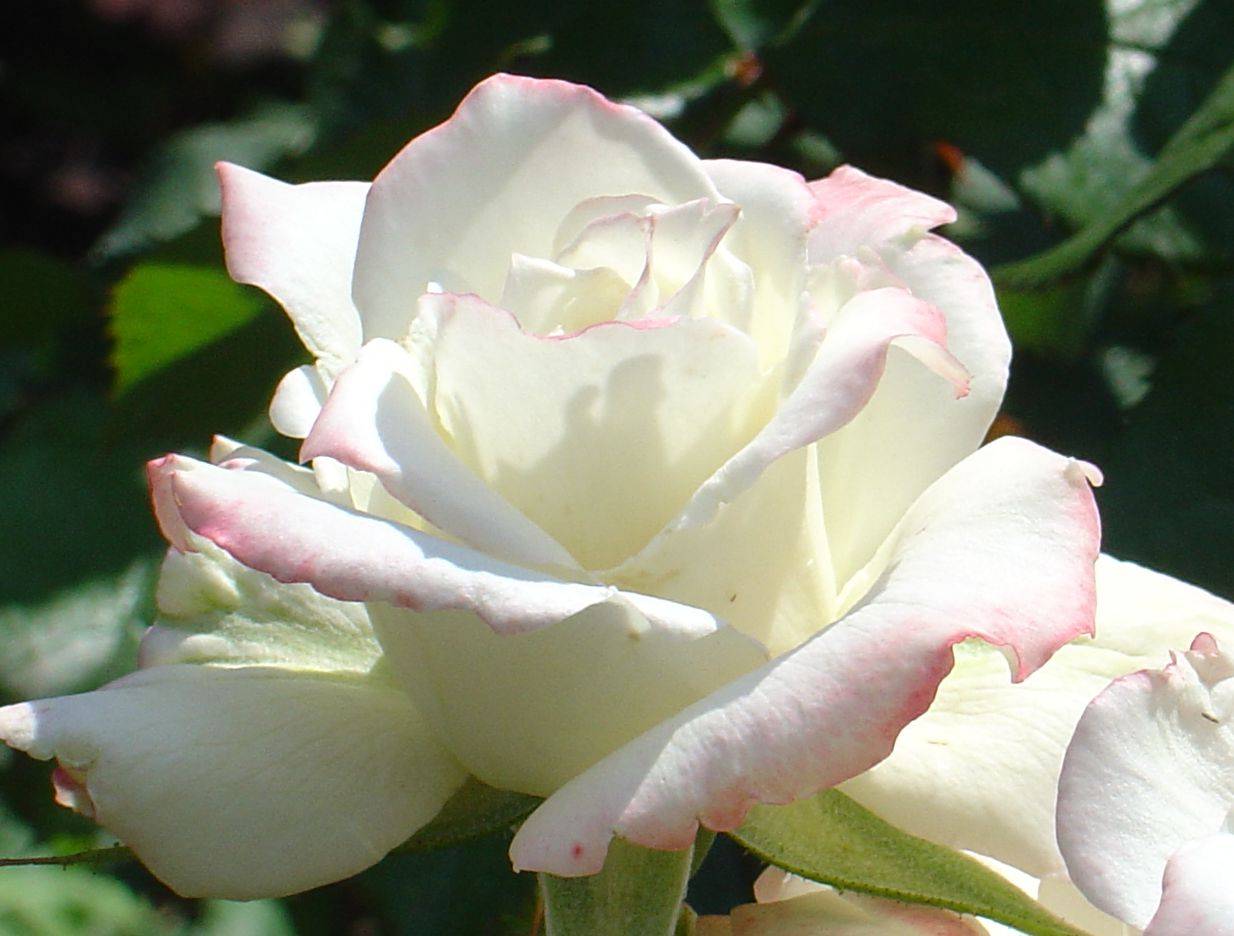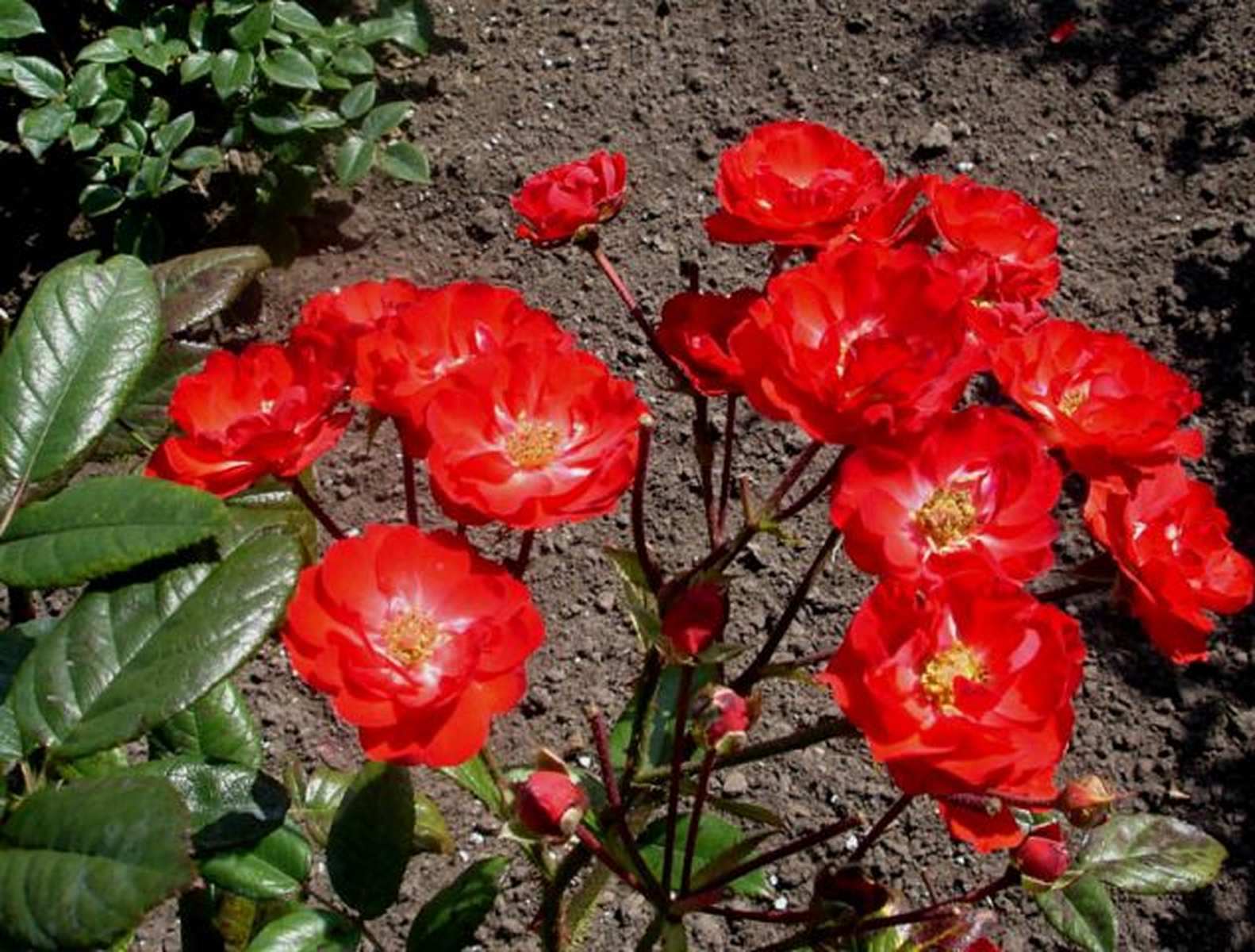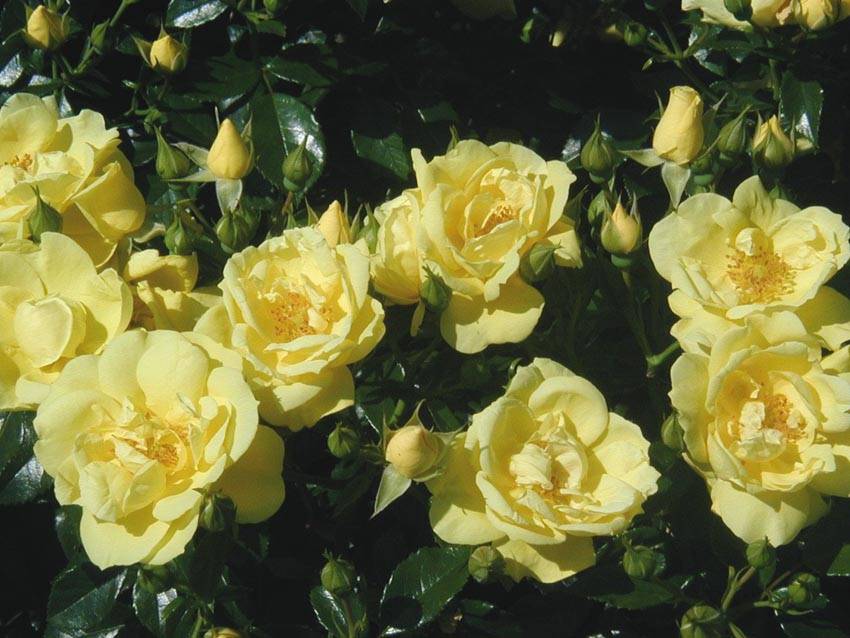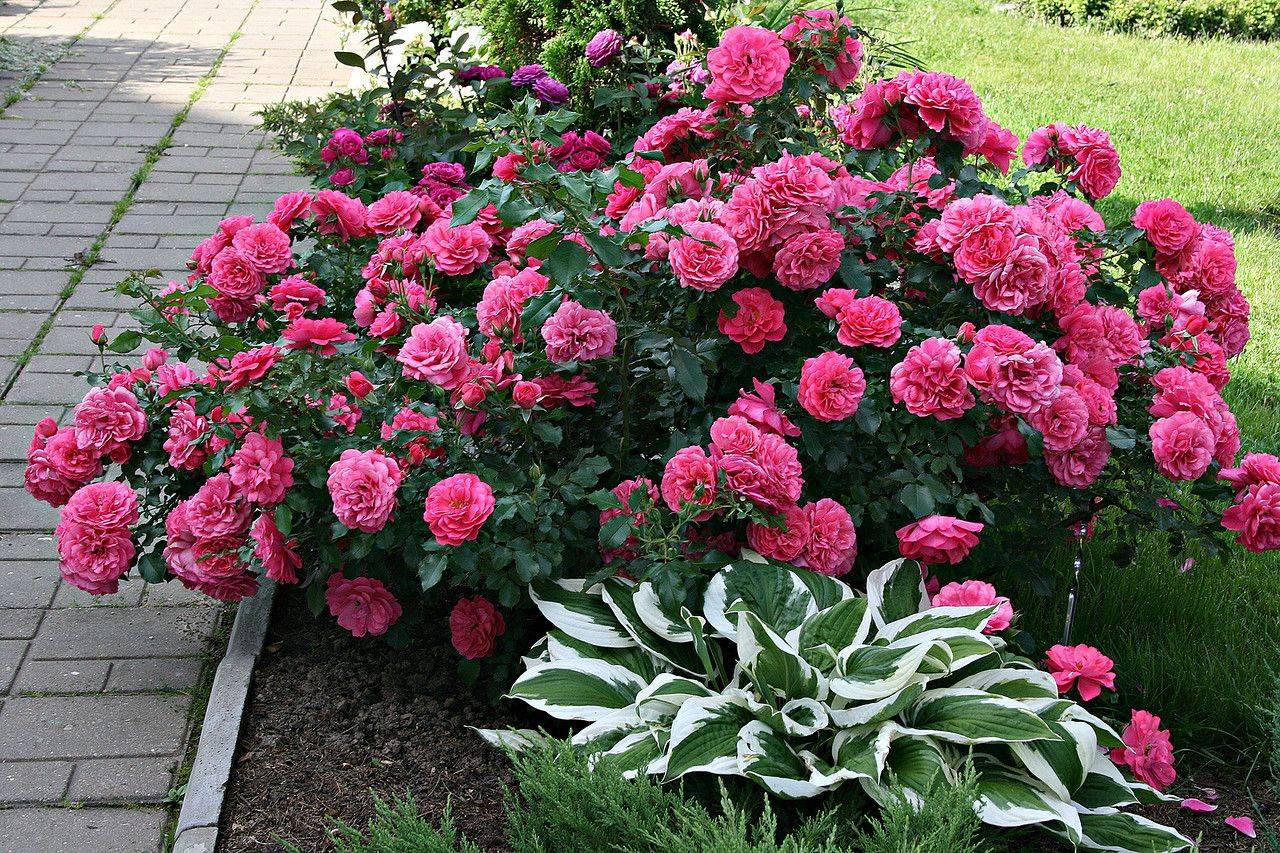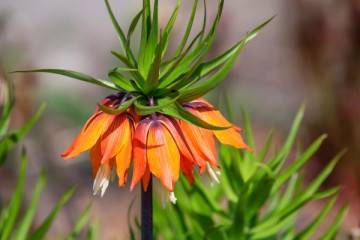At what distance to plant roses from each other
Content:
The issue of keeping the distance between rose bushes is not relevant only for single plantings. In other cases, it is important for the gardener to take into account the rules for arranging shrubs and know at what distance to plant roses from each other in order to get a truly aesthetic composition.
Flowers in landscape design
The beauty of any variety is most vividly revealed with a successful choice of companions for it. The classic landscape design is a combination of undersized conifers with various varieties of roses. Both groups of plants coexist perfectly and do not oppress each other.
Single bushes look exquisite against the background of an even green lawn. If there is a goal to get a real rose garden, then it is worth planting only low-growing ground covers that serve as a background.
A variety of varieties in terms of appearance and cultivation characteristics
The whole variety of modern types and varieties of roses is impossible to imagine. There are several popular classifications that distinguish the following categories:
Park
The oldest varieties (Grootendorst and Pink Grootendorst, Ritausma), which also include decorative rose hips. Used in landscaping large spaces, suitable for single and group plantings. Winter-hardy roses rarely suffer from diseases and pests, they are very undemanding to care for. Flowering usually occurs 1-2 times per season.
Repaired
Are re-flowering. Popular varieties: Georg Arends, George Dickson, Paul Neyron, Frau Karl Druschki, Hugh Dickson. The height of mature bushes is 2 m or more. Erect, spreading shoots. Flowering lasts in waves, starting in June. The flowers are large, up to 16 cm in diameter. The varieties are less winter-hardy than park varieties, more demanding in terms of care and protection from pests and diseases.
Hybrid tea
Specially bred for cutting varieties, the ancestors of which were Chinese tea roses, originally crossed with remontant roses. As a result, the new varieties have combined the best characteristics of their predecessors. Popular varieties: Angelica, Athena, Black Baccara, Gloria Dei, Duftwolke, Mainzer Fastnacht. Flowering lasts almost the entire season from June to October, and the buds can be single or collected in loose brushes. The bushes reach a height of 60-150 cm. They are very demanding to care for.
Polyant
Low-growing with a dense crown, strongly branching bushes from the very beginning of summer expel many small (up to 6 cm in diameter) buds, which can form inflorescences of 20-100 corollas. There are simple and double varieties: Border King, Gloria Mundi, Yvonne Rabier, Cameo. There are almost no thorns.
Floribunda
Obtained by crossing hybrid tea with polyanthus. Long and abundant flowering lasts all summer and autumn. They are terry and simple. Bushes 30-100 cm high. Low-growing varieties (up to 50 cm) are called patios or mini floribunda. Popular varieties: Iceberg, Galaxy, Diadem.
Miniature
Tiny, densely leafed bushes reach a height of no more than 40 cm, used to decorate borders and alpine slides.Flowers are small and double. They can be planted in pots at home, then flowering lasts all year. In the open field, flowering lasts from May to October, but for the winter the bushes need shelter. Popular varieties: Baby Masquerade, Denise Cassegrain, Colibri.
Groundcover
Creeping shrubs with shoots up to 4 m long. Used as ground covers. Flowers can be any: from simple to densely double. Plants are very undemanding to care for. They are widely used for landscaping slopes and decorating plantings of standard roses. Notable varieties: Alba Meidiland, Bessy, Golden Cover. Carpet.
Climbing
Small (no more than 5 cm in diameter) flowers in large inflorescences are formed on long creeping shoots that need support. Hence the main purpose - the design of arches and pergolas.
Popular varieties: Dorothy Perkins, New Dawn, Rosarium Uetersen.
Shrubs
Shrub roses with very powerful shoots and up to 3 m in height. Usually, flowering is abundant and long, but only once. This also includes English roses with a rich aroma and wild species. Popular varieties: Abraham Darby, Graham Thomas, Michka.
How to maintain the distance between roses when planting in the ground
The first rule for distributing roses on the site is the principle of a well-ventilated space. Mature bushes should not form a solid wall, as this leads to the appearance of fungal diseases.
Groundcover
The optimal distance between creeping and slowly growing bushes is 60 cm. In total, no more than 3 bushes can be left per 1 m² of plantings.
Curly for wall decoration
If we are talking about a slow-growing climbing variety, then for it the optimal distance between the bushes will be 2 m. Fast-growing tall varieties are planted 3 m from each other. To decorate a pergola or gazebo, 1 bush is enough. Over time, it will braid the entire support.
Bush
This type of shrub can be used to form a hedge. To do this, the distance between the rose bushes during planting must be kept 80 cm or more. For a single planting, you need to plant the bushes 3 m apart.
Flower beds
Slow-growing varieties are planted in spring with an interval of 40 cm. There are a maximum of 6 plants per 1 m² of planting. To grow tall varieties, they are planted at a distance of 60 cm, then there will be up to 3 bushes per 1 m².
Stamp and cascade
In ordinary plantings, the distance between the bushes is 3 m. For large varieties of cascading roses, the distance is increased to 5 m. The fact is that standard roses look best in a single planting.
Universal distance between roses
If it is not known exactly what type of rose got (presented, for example), then it is worth applying the universal rules for planting bushes:
- half the height of an adult bush is left between the bushes;
- the size of an adult plant is specified by the variety name.
Knowing at what distance to plant roses, it is easier to create optimal conditions for them. Then the rose bushes will look spectacular without interfering with each other.
